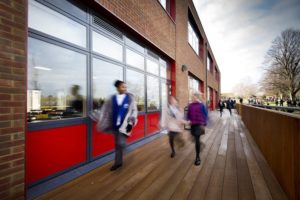As we look forward into the year and soon to be a new decade, sustainability is at the top of the agenda for every sector and in particular, the construction industry. With pressure on resources increasing, every player in the industry must work to balance short-term demand with long-term prosperity both for themselves and the planet. However, as technology and innovative thinking develops we’re coming to realise that these two aims aren’t diametrically opposed: in fact, they can work hand in hand.
So, how can our sector meet its sustainability commitments in 2019 and beyond? We speak to Kevin Lyons, Director at Lyons O’Neill about the challenges.

KevinLyons
There are three main areas bursting with potential for sustainable practice which the industry can’t afford to ignore.
-
New ways of working
January saw the International Organization for Standardization (ISO) launched its new global standards for Building Information Modelling (BIM) [ISO 19650-1 and ISO 19650-2], fully cementing the key role this technological innovation now plays in construction. With the digital revolution helping countless other industries meet environmental targets every level of our industry should be embracing BIM for the most efficient, sustainable projects. The benefits of being able to virtually design project plans cannot be underestimated, as any flaws and issues are immediately picked up and rectified before ground is broken. Added to this, the ability to share designs on the go (one of the software programmes we use has a specially developed app for tablets and smartphones) means that everyone is up to date with real-time information so there’s no costly confusion. BIM is therefore a clear example of where the construction industry’s long and short-term goals overlap to become one and the same. Working efficiently, reducing programme time and resource waste is not only a crucial step towards a sustainable future but can also help cut individual project costs, with the ISO stating that incorporating its use could save over a fifth in construction costs. From any angle, therefore, BIM is a vital investment for every construction firm.
Another new way of working which can help us meet our sustainability commitments is Modular Construction. Although transport costs and emissions must of course be factored in, the ability to produce units off-site and manoeuvre them into place could mean more than just overcoming the logistics of site constraints. Studies suggest that off-site construction in general can reduce waste by up to 90%, not to mention minimising impact on the site’s local environment through drastically cut vehicle movements. Modular construction is often discussed in conjunction with residential projects but there’s no reason why this working practice can’t be used for structures in other sectors too: our design for Woodcote Primary School saw us work closely with the contractor and modular installar to develop a two-storey modular structure.

Woodcote Primary
However, the most important way of working we all need to develop is our attitude towards the environment: building projects which take into account and work with, not against their surroundings. Admittedly, this is a frame of mind which comes more easily to engineers – with drainage and load-bearing concerns meaning we are always acutely aware of what can be sustained – but is a crucial way of thinking the whole industry must embrace to be serious about sustainability. For example, the sloping site at Redesdale House meant we had to work carefully with the land to create this modern yet lightweight and sustainable structure, meeting the project’s sustainability targets and working with efficiency to minimise disruption to the rural location. But this environment-centric attitude is equally important for urban sites. Our work for Harris Academy Purley in Croydon saw us help the project achieve a BREEAM Excellent rating after designing an infiltration system to discharge surface water from the site to the water table, which earned vital credits for the three-storey school. Again, the in-depth understanding of the local environment required for this is greatly enhanced through technology, with 3D point cloud surveys being instrumental in providing this geotechnical understanding.
-
New materials
However, when it comes to sustainable practice, materials are just as important as methods and there are many new options being developed. As industries the world over seek to replace non-biodegradable, emission-heavy materials with sustainable ones, our sector also needs to commit to the drive for environmentally friendly materials. One such product which has quickly gained a following over the past few years is Cross-Laminated Timber (CLT), a lightweight, layered timber which is recognised for its biodegradability and function as a carbon store, as a plant material. In addition, CLT’s structural strength means it’s suited to projects of any size, and it was all these qualities that made it the perfect choice for a new accommodation lodge for a world-famous football team, forming the two storey structure needed to house a sports facility, gym, treatment area, dining room, and tactics and office space.
CLT can’t solve our sustainability issues alone and there are other new materials being developed (from carbon-absorbing concrete and less-traditionally used plant materials like bamboo, through to compressed earth blocks) and still more we must invest in developing. There’s also much that can be done in increasing supply and demand of recycled building materials, whether that’s timber, steel, or other wastes from projects, which helps a project massively reduce its environmental impact at many levels. However, as with any new product and innovation, progress stems from demand and its only through all levels of our indstry actively pursuing new sustainable building options that we’ll see an even greater range and choice become available.

Harris Academy
-
Renewable energy
Finally, the construction industry has a role to play in an key sustainability issue affecting every industry: renewable energy. From designing buildings which maximise renewable sources to assisting with research and development in this vital area, sustainable energy very much falls inside our sector’s remit. At Lyons O’Neill we’ve been lucky enough to work with one of the UK’s largest installers of photovoltaic cells as they look to create standardised fitting systems for a variety of roof types so that solar energy can become an easy and accessible option for all. We’ve also collaborated with a number of manufacturers in solar energy, helping their research and development teams prepare and fine-tune their products ready for market. Participating sustainability research in this way is something we’re passionate about and it’s rewarding to help demonstrate that solar energy – and other renewable energy solutions – isn’t just a box-ticking exercise for the brochure but a real, practical solution for projects and sectors across the country.
If you would like to read more articles like this then please click here.
The post How our sector can meet its sustainability commitments in 2019 appeared first on UK Construction Online.
Walang komento:
Mag-post ng isang Komento